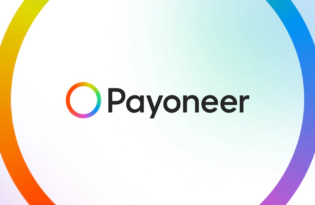Guide to Online Checkout
The online checkout process is more than just the final step of a purchase—it’s a powerful driver of customer satisfaction, trust, and revenue. In this comprehensive guide, we break down everything you need to know about optimizing your checkout, from how it works to why it matters. Learn best practices, common terminology, and how Payoneer…

Online checkout is critical for eCommerce, serving as the bridge between customers and successful transactions. A well-maintained checkout process is much more than a payment facility – it shapes the entire shopping experience, influencing customer satisfaction, retention, and ultimately revenue. It’s the kind of stuff that can make or break an eCommerce business in today’s competitive landscape.
In this comprehensive guide, we dive deep into the world of online checkouts. You’ll learn what it is, how it works, and why optimizing this process is important for your business’s success. Along the way, the guide will also examine how Payoneer Checkout can help businesses elevate their checkout game with flexible and reliable solutions tailored for modern eCommerce needs.

What is an online checkout?
Online checkout is the process customers go through to complete a purchase on an eCommerce platform. It’s a critical touchpoint where the customer’s overall experience translates into direct profit for the business. The checkout process acts as a bridge between the intent to buy and the final purchase, making its design and functionality absolutely crucial.
In its foundation, an online checkout typically involves several key components:
- User input: Customers enter their billing, shipping, and contact information. This step should be intuitive and secure, so that the customer feels safe and comfortable.
- Payment details: Customers select their preferred payment method, whether it’s a credit card, digital wallet, or alternative option like Payoneer Checkout.
- Order review: A final review page allows customers to verify their order details, ensuring transparency and minimizing errors.
- Confirmation: Once submitted, customers receive an order confirmation, often accompanied by an email or receipt.
The checkout experience can vary widely depending on the platform, type of business, and the target audience. For instance, a B2C clothing retailer would likely focus on a visually appealing and simple checkout, while a B2B supplier might prioritize detailed invoices and account-based payments.
A seamless checkout process isn’t just about technology; it’s about understanding your customers’ needs. For businesses, Payoneer simplifies this process by offering customizable, secure, and global-ready solutions that integrate seamlessly into various platforms.
Many often mistake online checkouts for payment gateways.
How does the online checkout process work?
The online checkout process begins as soon as the customer decides to make a purchase, which is why it’s impossible to pinpoint the exact moment with a digital marketing tool. The process comprises several essential steps that guide them from the shopping cart to the final confirmation.
Let’s take a closer look:
- Cart review: Customers start by reviewing the items they’ve added to their cart. This step often includes options to modify quantities, apply discount codes, or remove unwanted items.
- Information input: Customers provide necessary details such as billing addresses, shipping information, and contact details. Autofill features and clear form design are encouraged as they significantly reduce friction and make this step quick and painless.
- Payment selection: Customers select their preferred method of payment, whether it’s a credit card, debit card, digital wallet, or another alternative.
- Order review: Before finalizing the purchase, customers review their order one last time. This page should display a summary of the items, shipping costs, taxes, and the total amount to be paid. Clearly labeled calls to action and confirmation prompts help guide users to the next step.
- Order confirmation: Once the purchase is submitted, customers are directed to a confirmation page. This page typically includes a thank-you message, order details, and an email confirmation. A clear acknowledgment reassures customers that their purchase has been successfully processed.
Why is optimizing the online checkout process important?
Optimizing the checkout process is essential for businesses aiming to maximize their sales and improve customer satisfaction. Here’s why:
- Reducing cart abandonment: It’s common knowledge for eCommerce marketers that a significant percentage of customers abandon their carts due to complicated or lengthy checkout processes. By simplifying the steps and removing unnecessary barriers, businesses can recover these potential sales.
- Enhancing customer experience: A fast, intuitive, and hassle-free checkout process leaves a positive impression on customers. This increases the likelihood of repeat purchases and builds long-term loyalty.
- Boosting conversion rates: An optimized checkout process directly impacts the bottom line. When customers can complete transactions without delays or frustrations, businesses see higher conversion rates and increased revenue.
- Accommodating diverse preferences: Modern consumers expect flexibility. Providing multiple payment options, supporting various currencies, and ensuring compatibility across devices can make your checkout process more inclusive and appealing.
- Building trust and credibility: Transparent pricing, clear error messages, and secure payment options foster trust. Customers are more likely to complete their purchases when they feel confident in the safety and reliability of the process.
- Adapting to mobile shopping trends: With more customers shopping on mobile devices, a mobile-friendly checkout process is no longer optional. Businesses that fail to optimize for mobile risk losing a significant portion of their audience.
- Improving metrics and insights: An optimized checkout process allows businesses to better track key performance indicators like conversion rates, average order value, and cart abandonment rates.
The Benefits of Payoneer Checkout
When it comes to online checkout solutions, Payoneer Checkout stands out as a reliable and versatile option tailored for eCommerce businesses. Here are some of the standout benefits it brings to the table in the context of modern online checkout:
- Global reach: Payoneer Checkout is designed to support international transactions, making it an ideal solution for businesses aiming to expand around the world. It simplifies accepting payments from customers around the world, regardless of currency or location.
- Multiple payment options: To cater to diverse customer preferences, Payoneer Checkout supports a wide range of payment methods, including credit cards, debit cards, and alternative payment options. This flexibility ensures a seamless experience for users across different regions.
- Seamless integration: It can be easily integrated into various eCommerce platforms, providing a hassle-free setup for businesses. Its adaptability means that it can work smoothly with your existing systems.
- Security and compliance: With robust security measures and compliance with global payment standards, Payoneer Checkout ensures that transactions are safe and secure. Customers can trust the platform, which means higher conversion rates.
- Transparent pricing: Businesses benefit from clear and competitive pricing structures, allowing them to manage costs effectively without worrying about hidden fees or surprises.
- Streamlined operations: By consolidating payments and simplifying the checkout process, Payoneer Checkout reduces administrative burdens for businesses, allowing them to focus on growth and customer satisfaction.
- Scalability: Whether you’re a small business or an established enterprise, Payoneer Checkout scales as your needs evolve. Its flexible design ensures that it grows alongside your business.
- Improved Customer Experience: By providing a fast, intuitive, and user-friendly interface, Payoneer Checkout enhances the overall shopping experience for customers, encouraging repeat purchases and building brand loyalty.
Find out more by visiting the Payoneer Checkout page.
Best practices for online checkout optimization
Creating a seamless online checkout process requires more than just technical know-how. It demands a deep understanding of user behavior and strategic implementation of best practices. Here are some proven strategies to enhance your online checkout:
- Simplify the layout: Avoid overwhelming customers with too many fields or steps. Use a clean, uncluttered design with clear instructions to guide users through the process.
- Enable guest checkout: Don’t force customers to create an account before making a purchase. Offering a guest checkout option creates a frictionless experience and speeds up the process.
- Offer multiple payment methods: Cater to a wide audience by including popular payment options like credit cards, digital wallets, and regional payment methods.
- Optimize for mobile: With an increasing number of shoppers using mobile devices, ensure your checkout process is responsive and mobile-friendly. Use large, clickable buttons and minimize the need for text input.
- Provide real-time assistance: Use chatbots or live chat features to assist customers in real-time if they encounter issues during checkout.
- Display trust signals: Incorporate security badges, SSL certificates, and clear privacy policies to reassure customers about the safety of their information.
- Use indicators for progress: Let customers know how many steps remain in the checkout process. This transparency reduces anxiety and encourages completion.
- Leverage autofill and saved details: Save returning customers time by offering autofill options and securely storing their payment details for future use.
- Test and optimize regularly: Conduct A/B testing to find the most effective checkout designs and workflows. Continuously refine your approach based on customer feedback and performance data.
- Communicate shipping costs early: Surprise fees are a major reason for cart abandonment. Clearly display shipping and tax costs early in the process.
Online checkout terminology
Understanding online checkout terms is vital for implementing and optimizing your process. Here are some key terms every eCommerce professional should know:
- Cart abandonment rate: The percentage of users who add items to their cart but leave the website before completing the purchase.
- Checkout flow: The series of steps a customer follows to complete a purchase, from cart review to payment confirmation.
- One-click checkout: A streamlined process that allows returning customers to complete their purchase with saved payment and shipping details in a single click.
- Responsive design: An approach to web design that ensures the website adapts seamlessly to different devices and screen sizes, including mobile phones and tablets.
- PCI compliance: Adherence to the Payment Card Industry Data Security Standard (PCI DSS), which ensures secure handling of credit card information.
- Conversion rate: The percentage of website visitors who complete a desired action, such as making a purchase, out of the total visitors.
- Digital wallet: An electronic system that securely stores users’ payment information and allows for quick and easy transactions.
- Progress indicators: Visual cues that show users where they are in the checkout process and how many steps remain.
- Upselling and cross-selling: Strategies used during checkout to recommend additional products or upgrades to increase the order value.
- A/B testing: A method of comparing two versions of a checkout page to determine which one performs better in terms of user engagement and conversions.
Familiarity with these terms not only helps in understanding your own checkout process but also enables better communication with developers, payment providers, and other stakeholders involved in optimizing your eCommerce experience.
Frequently asked questions
What is the difference between online checkout and payment gateways?
Online checkout refers to the process customers follow to complete a purchase, while payment gateways are the technologies that process payments securely. They work together but serve distinct purposes.
How can I improve the mobile checkout experience?
Focus on responsive design, use large buttons for easy navigation, minimize typing requirements, and streamline the process to fit smaller screens.
Why do customers abandon their carts during checkout?
Common reasons include unexpected fees, mandatory account creation, complicated processes, and security concerns. Addressing these issues can help retain customers.
What role does trust play in the checkout process?
Displaying security badges, offering secure payment methods, and providing clear contact information can build customer trust and encourage them to complete their purchase.
How can I measure the success of my online checkout process?
Track metrics such as conversion rate, cart abandonment rate, and average order value to gauge the effectiveness of your checkout process.
By focusing on these elements and best practices, businesses can create a streamlined, secure, and customer-friendly checkout experience that drives sales and builds loyalty.
What is a Google Virtual Card?
A Google Virtual Card is a secure, digital version of your physical credit or debit card that you can use for online transactions. Integrated with Google Wallet, these cards help protect your real card information by generating unique, temporary card numbers for each transaction. This added layer of security is particularly useful for online checkouts, ensuring your personal details remain protected.
What is Click to Pay?
Click to Pay is a digital checkout solution that simplifies the online payment process. Once you register your card with Click to Pay, you can use it for purchases without having to manually enter your card details each time. This speeds up the checkout process and provides a secure, user-friendly experience, aligning with the broader trend of streamlining online checkouts.
How do I use a Virtual Card on Chrome?
Using a virtual card on Chrome is straightforward. After adding your virtual card details to your browser’s autofill settings or a digital wallet like Google Wallet, you can select it as a payment method during checkout. This is especially useful for enhancing convenience and security during online transactions.
What is Link Payment?
Link payment involves sharing a secure payment link with customers, enabling them to complete transactions without visiting a dedicated website. This method is often used by small businesses or service providers for invoicing and direct payments. It adds flexibility to the checkout process by allowing payments to occur anytime, anywhere.
Can I pay with a Credit Card?
Yes, credit cards are one of the most commonly accepted payment methods in online checkouts. They offer convenience, speed, and security, with additional features like fraud protection and rewards programs. A well-designed checkout process accommodates credit card payments seamlessly.
How to use a Visa Card?
Using a Visa card for online checkouts is simple. Enter your card details, including the card number, expiration date, and CVV, in the payment section during checkout. For added security, some transactions may require a verification step like 3D Secure authentication or to approve payment through your card’s app. Visa cards integrate smoothly with most eCommerce platforms, making them a preferred choice for online payments.
Disclaimer
Nothing herein should be construed as if Payoneer Inc. or its affiliates are soliciting or inviting any person outside the jurisdiction where it operates/is licensed to engage in payment services provided by Payoneer Inc. or its affiliates, unless permitted by applicable laws. Any products/services availability are subject to customer’s eligibility. Not all products/services are available in all jurisdictions in the same manner. Depending on your eligibility, you may be offered with the Corporate Purchasing Mastercard, issued by First Century Bank, N.A., under a license by Mastercard® and provided to you by Payoneer Inc., or the Payoneer Business Premium Debit Mastercard®, issued and provided from Ireland by Payoneer Europe Limited under a license by Mastercard. The Payoneer Business Premium Debit Mastercard® cannot be used at merchants or ATMs in Hong Kong or for HKD payments. If you are located in the EEA, all Payoneer Services will be provided to you by Payoneer Europe Limited, trading as Payoneer and regulated by the Central Bank of Ireland.
The information in this document is intended to be of a general nature and does not constitute legal advice. While we have endeavored to ensure that the information is up to date and correct, we make no representations or warranties of any kind, express or implied, about the completeness, accuracy, reliability or suitability of the information. In no event will we be liable for any loss or damage including without limitation, indirect or consequential loss or damage, or any loss or damage whatsoever incurred in connection with the information provided.
Related resources
Latest articles
-
Planning to hire employees in France? Here’s a quick guide
Looking to hire employees in France for your U.S. company? Learn about employment in France and how Payoneer Workforce Management makes it simple to hire in France.
-
Planning to hire employees in Spain? Here’s a quick guide
Are you looking to hire employees in Spain? Learn about employment in Spain and how Payoneer Workforce Management can help American companies hiring in Spain.
-
How to hire employees in the Netherlands
Looking to hire employees in the Netherlands for your U.S. company? Learn about employment in the Netherlands and how Payoneer Workforce Management can help hire in the Netherlands.
-
How to hire employees in Australia
Looking to hire employees in Australia for your US company? Learn about employment in Australia and how Payoneer Workforce Management makes it easy to hire in Australia.
-
Planning to hire employees in Germany? Here’s a quick guide
Are you looking to hire employees in Germany? Learn about hiring in Germany and how Payoneer Workforce Management can help U.S. companies hiring in Germany.
-
Planning to hire employees in the Philippines? Here’s a quick guide
Wondering how an American company hires employees in the Philippines? Our guide covers how to hire employees in the Philippines and how we can help.
Disclaimer
Nothing herein should be construed as if Payoneer Inc. or its affiliates are soliciting or inviting any person outside the jurisdiction where it operates/is licensed to engage in payment services provided by Payoneer Inc. or its affiliates, unless permitted by applicable laws. Any products/services availability are subject to customer’s eligibility. Not all products/services are available in all jurisdictions in the same manner. Depending on your eligibility, you may be offered with the Corporate Purchasing Mastercard, issued by First Century Bank, N.A., under a license by Mastercard® and provided to you by Payoneer Inc., or the Payoneer Business Premium Debit Mastercard®, issued and provided from Ireland by Payoneer Europe Limited under a license by Mastercard. The Payoneer Business Premium Debit Mastercard® cannot be used at merchants or ATMs in Hong Kong or for HKD payments. If you are located in the EEA, all Payoneer Services will be provided to you by Payoneer Europe Limited, trading as Payoneer and regulated by the Central Bank of Ireland.
The information in this document is intended to be of a general nature and does not constitute legal advice. While we have endeavored to ensure that the information is up to date and correct, we make no representations or warranties of any kind, express or implied, about the completeness, accuracy, reliability or suitability of the information. In no event will we be liable for any loss or damage including without limitation, indirect or consequential loss or damage, or any loss or damage whatsoever incurred in connection with the information provided.













